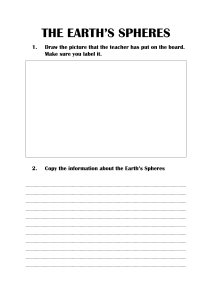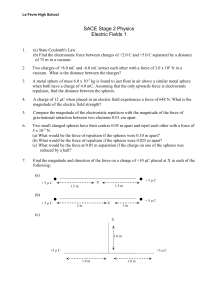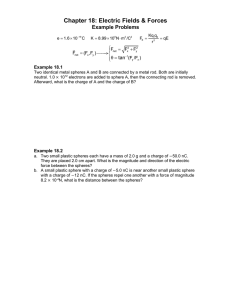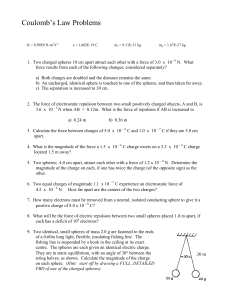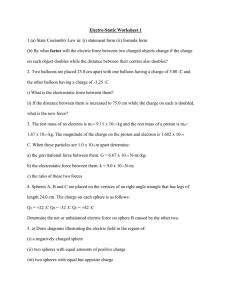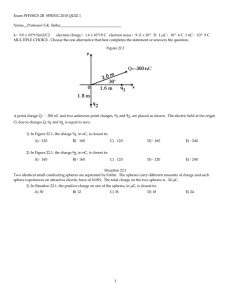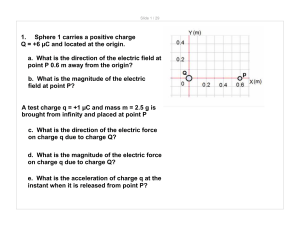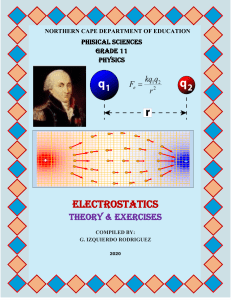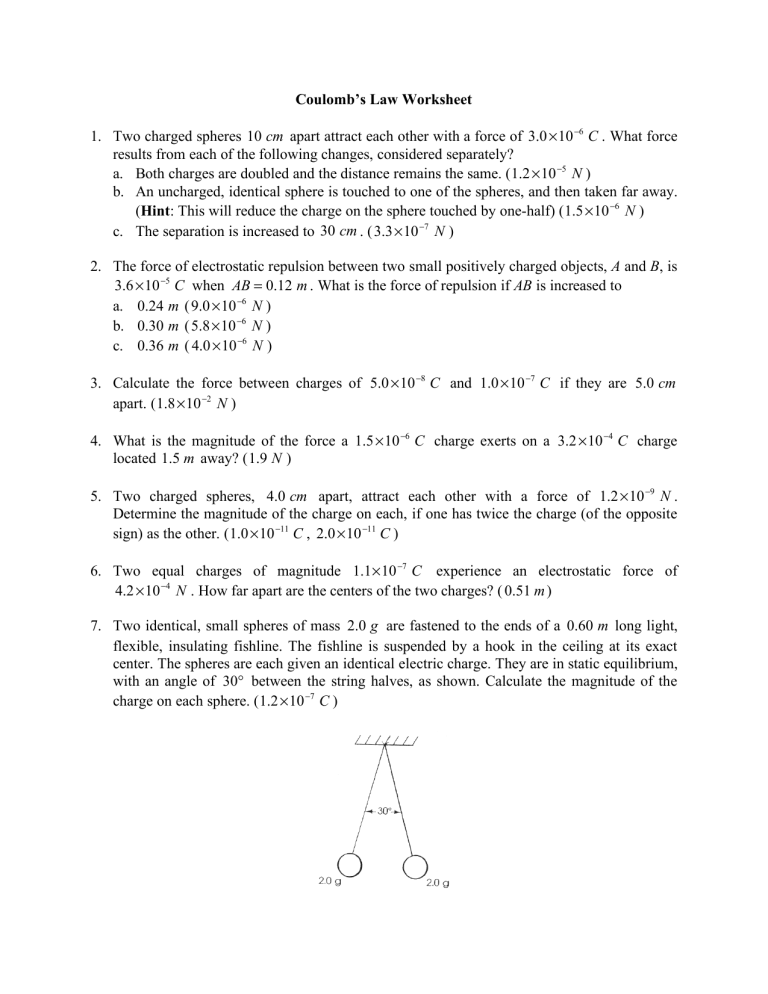
Coulomb’s Law Worksheet 1. Two charged spheres 10 cm apart attract each other with a force of 3.0 " 10 !6 C . What force results from each of the following changes, considered separately? a. Both charges are doubled and the distance remains the same. (1.2 " 10 !5 N ) b. An uncharged, identical sphere is touched to one of the spheres, and then taken far away. (Hint: This will reduce the charge on the sphere touched by one-half) (1.5 " 10 !6 N ) c. The separation is increased to 30 cm . ( 3.3 " 10 !7 N ) 2. The force of electrostatic repulsion between two small positively charged objects, A and B, is 3.6 " 10 !5 C when AB = 0.12 m . What is the force of repulsion if AB is increased to a. 0.24 m ( 9.0 " 10 !6 N ) b. 0.30 m ( 5.8 " 10 !6 N ) c. 0.36 m ( 4.0 " 10 !6 N ) 3. Calculate the force between charges of 5.0 " 10 !8 C and 1.0 " 10 !7 C if they are 5.0 cm apart. (1.8 " 10 !2 N ) 4. What is the magnitude of the force a 1.5 " 10 !6 C charge exerts on a 3.2 " 10 !4 C charge located 1.5 m away? ( 1.9 N ) 5. Two charged spheres, 4.0 cm apart, attract each other with a force of 1.2 " 10 !9 N . Determine the magnitude of the charge on each, if one has twice the charge (of the opposite sign) as the other. (1.0 " 10 !11 C , 2.0 " 10 !11 C ) 6. Two equal charges of magnitude 1.1 " 10 !7 C experience an electrostatic force of 4.2 " 10 !4 N . How far apart are the centers of the two charges? ( 0.51 m ) 7. Two identical, small spheres of mass 2.0 g are fastened to the ends of a 0.60 m long light, flexible, insulating fishline. The fishline is suspended by a hook in the ceiling at its exact center. The spheres are each given an identical electric charge. They are in static equilibrium, with an angle of 30° between the string halves, as shown. Calculate the magnitude of the charge on each sphere. (1.2 " 10 !7 C ) 8. Three negatively charged spheres, each with a charge of 4.0 " 10 !6 C , are fixed at the vertices of an equilateral triangle whose sides are 20 cm long. Calculate the magnitude and direction of the net electric force on each sphere. ( 6.2 N [outward, 150° away from each side]) 9. Three objects, carrying charges of ! 4.0 " 10 !6 C , ! 6.0 " 10 !6 C , and + 9.0 " 10 !6 C , respectively, are placed in a line, equally spaced from left to right by a distance of 0.50 m . Calculate the magnitude and direction of the net force acting on each that results from the presence of the other two. ( 0.54 N !" left #$ , 2.8 N !" right #$ , 2.3 N !" left #$ ) 10. Two small spheres, with charges 1.6 " 10 !5 C and 6.4 " 10 !5 C , are situated 2.0 m apart. They have the same sign. Where, relative to these two objects, should a third object be situated, of opposite sign and whose charge is 3.0 " 10 !6 C , so that it experiences no net electrical force? (on the line joining them, 0.67 m from the 1.6 " 10 !5 C charge)
